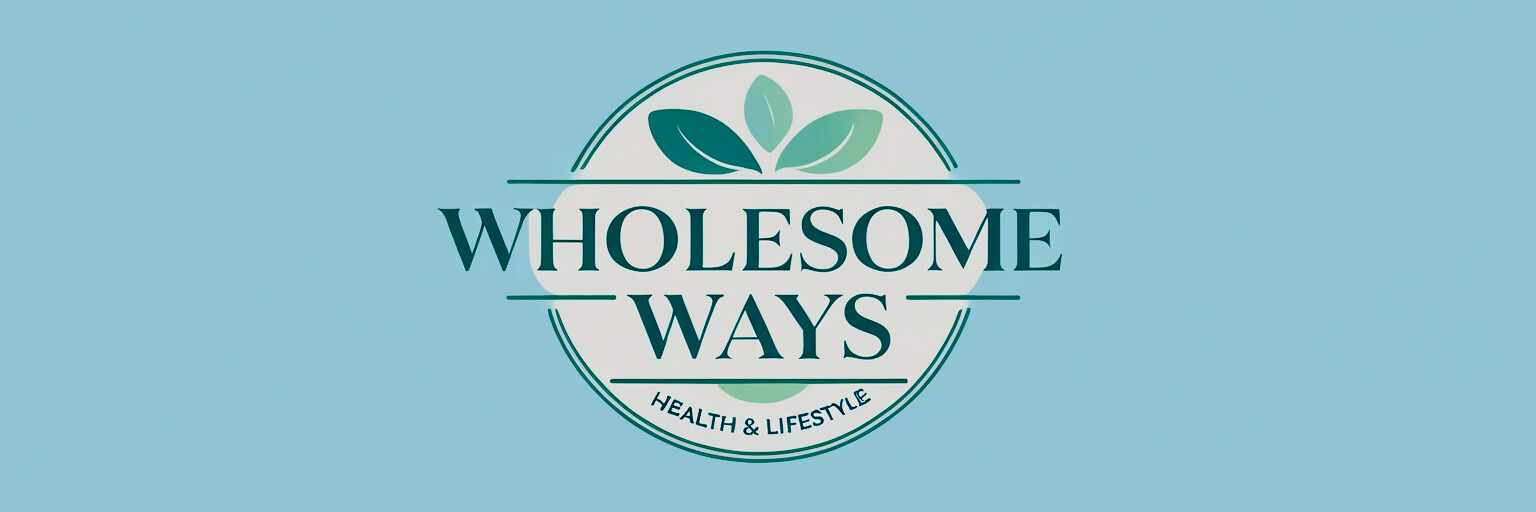Now Reading: Emotional Release: Let Go & Move Forward
-
01
Emotional Release: Let Go & Move Forward
Emotional Release: Let Go & Move Forward

Life is a beautiful, intricate dance of experiences, and with it comes a spectrum of emotions. From joy and excitement to sadness, anger, and anxiety, our feelings are a vital part of what makes us human. Yet, how often do we truly allow ourselves to feel, process, and ultimately let go of emotions that no longer serve us?
For many of us, the natural inclination might be to push uncomfortable feelings away, to suppress them, or to pretend they don’t exist. We might label certain emotions as “bad” or fear that acknowledging them will make us seem weak. But here’s a truth from your friend here, speaking from the heart: stuffing those feelings away isn’t a solution; it’s a roadblock to your true emotional well-being. It’s time to discover a kinder, more powerful path: The Art of Emotional Release.
The Art of Emotional Release: 10 Practical Steps to Let Go & Move Forward
Introduction: Why Emotional Release Matters for Your Well-being
Emotional release is a healthy, essential process of acknowledging, processing, and integrating your feelings, rather than burying them deep inside. Think of it like clearing out a cluttered room in your home: you wouldn’t just shove everything into a closet and forget about it, would you? Eventually, that closet would overflow, making it impossible to find what you need and creating a pervasive sense of disorganization and stress.
Similarly, when emotions are repressed or “stuck” within us, they don’t just magically disappear. They can manifest in countless ways, often negatively impacting your mental and physical health. You might experience persistent stress, chronic anxiety, unexplained physical tension (like jaw clenching or shoulder pain that just won’t ease), feelings of burnout, difficulties in relationships, or even a persistent sense of low self-esteem. This is a clear signal of the powerful mind-body connection emotions share; what you feel emotionally often translates into tangible physical sensations.
This article is designed to be your warm, encouraging guide to gently navigating your inner emotional landscape. We’ll share practical, empathetic, and truly actionable steps to help you embrace the natural flow of your feelings, allowing you to process emotions in a healthy way and truly move forward with a lighter heart. It’s about empowering you to gently gain control over your emotional landscape and foster genuine resilience – not by controlling your feelings, but by allowing them to move through you.
Understanding Your Emotional Landscape: The Essential First Steps
Before we dive into specific techniques for release, let’s lay a foundational groundwork together. The profound journey of emotional release lovingly begins with inner awareness and acceptance.
Acknowledge and Identify Your Emotions (Without Judgment, Just Curiosity)
The very first, most compassionate step is to simply notice what you’re feeling. Many of us say, “I feel bad,” but that’s like saying, “I feel weather” instead of “I feel the crisp, cool air of autumn.” Let’s get specific, shall we? Are you feeling sadness, anger, frustration, overwhelm, resentment, or something else entirely? Try to gently name the feeling, even if it feels uncomfortable. For example, instead of “I’m upset,” try “I’m feeling a wave of anger about this situation.”
Practice mindful awareness by observing your emotions without judgment or resistance. Don’t try to change them or analyze them just yet. Just notice them, as if you’re watching clouds gently pass by in the sky. Pay tender attention to how these emotions manifest in your body – do you feel a tightness in your chest, a knot in your stomach, tension in your shoulders, or a heaviness in your limbs? This beautiful connection between your emotions and bodily sensations is a key to lovingly releasing trapped emotions.
Validate Your Feelings: It’s Truly Okay to Feel
We often grow up in cultures that subtly (or not so subtly) discourage certain emotional expressions. “Don’t cry,” “Don’t be angry,” “Just cheer up” – sound familiar? This can lead to what some wisely call “emotional constipation,” where we hold onto feelings, believing they’re wrong, burdensome, or something to be ashamed of. But here’s the liberating truth, my dear friend: all emotions are valid. They are not random; they are messengers, wise signals from your inner self. They serve a purpose, even the uncomfortable ones, guiding you towards what you need.
Allow yourself full, gentle permission to feel whatever is present. There’s no “right” or “wrong” way to feel; there’s just *how you feel*. By truly validating your feelings, you create a safe, nurturing internal space for them to exist, which is the very first step toward their healthy and natural release. Remind yourself, perhaps with a hand over your heart: “It’s okay to feel sad right now,” or “My anger is a valid response to this situation, and I’m allowing myself to feel it.”
10 Practical Steps for Healthy Emotional Release: Your Gentle Toolkit
Now that you’ve lovingly laid the groundwork of awareness and validation, let’s explore actionable, heart-centered techniques to help you gently let go of emotional pain and truly foster your well-being. Think of these as supportive tools in your emotional wellness toolkit.
1. Mindful Breathing and Body Scans: Your Inner Anchor
Your breath is an incredibly powerful, always-available tool for regulating your nervous system and releasing tension. When you’re stressed or holding onto emotions, your breathing often becomes shallow and rapid without you even realizing it. Try deep, diaphragmatic breathing: inhale slowly through your nose, feeling your belly gently expand, then exhale slowly through your mouth, letting all the air out with a soft sigh. You can also try a “cleansing breath” – a deep inhale, hold for a moment, then a strong, audible exhale, as if releasing something that no longer serves you. This helps to gently discharge stored emotional energy.
Combine this with a body scan meditation: lie down comfortably or sit upright if preferred, and gently bring your attention to different parts of your body, from your toes to the top of your head. Notice any sensations, particularly areas of tension or discomfort, without judgment. Breathe into those areas, imagining your breath softening and inviting release with each exhale. This is a fundamental breathwork emotional release technique that beautifully helps with stress release techniques.
2. Expressive Writing (Journaling): Pour Your Heart onto the Page
Journaling provides a safe, unfiltered, and deeply personal outlet for your swirling thoughts and feelings. Grab a notebook and pen, or open a blank document, and just start writing. Don’t censor yourself, don’t worry about grammar or spelling – this is just for you. Just let it all out. Write about what you’re feeling, why you think you’re feeling it, and any thoughts or memories that come up. This isn’t about creating a literary masterpiece; it’s about getting those swirling emotions out of your head and onto the page, creating space within you. This act of “downloading” can bring immense clarity and a soothing catharsis, making it a cornerstone of journaling for emotional release.
3. Intentional Movement and Physical Activity: Shake It Out, Move It Through
Emotions, especially intense ones like anger or anxiety, create physiological energy in your body. Moving your body is an excellent, natural way to discharge this energy. Go for a brisk walk, run, dance wildly and freely in your living room, practice a flowing yoga sequence, or even just shake out your limbs, allowing tension to literally tremble out. Activities that allow for rhythmic or vigorous movement can be incredibly effective. This aligns with somatic experiencing principles, which suggest that the body holds unprocessed tension and that physical release can gently address it. It’s a direct, empowering way to achieve physical emotional release.
4. The Power of Crying: A Natural Cleansing
Crying is one of the most natural, ancient, and profoundly effective forms of emotional release, yet it’s often suppressed in our modern world. When you cry, your body actually releases stress hormones like cortisol, providing a physiological and emotional cleanse. Don’t hold back tears if they arise; see them as a release valve. Find a safe, private space where you can let yourself cry without judgment, knowing you are doing something deeply beneficial for yourself. It’s a profound act of self-care and a beautiful testament to your emotional strength. Allowing yourself this natural expression is a healthy way to process emotions and can bring a surprising sense of relief and calm afterward.
5. Sound and Vocal Release (Screaming, Toning, Singing): Give Voice to What’s Inside
Sometimes, emotions are so intense or stuck that they need a vocal outlet. If you’re feeling overwhelming anger, frustration, or sadness, find a safe way to release it vocally. This might mean screaming into a pillow (a classic for a reason!), shouting into a thick towel, or going somewhere truly private where you can let out primal sounds or even just a long, guttural sigh. You can also try toning (making sustained vocal sounds like “ahh,” “ohhh,” or “om”) or singing loudly to your favorite song, feeling the vibrations in your chest and throat. These vibrations help to move energy through your body and can be surprisingly liberating. It’s a powerful technique for anxiety emotional release and managing intense feelings.
6. Connect with Nature: Grounding Your Spirit
Stepping outdoors and immersing yourself in nature can be incredibly grounding and profoundly facilitate emotional processing. Whether it’s a gentle walk in a quiet park, sitting peacefully by a calming lake, or simply feeling the warmth of the sun on your skin and the wind in your hair, nature has an innate calming and regulating effect on our nervous systems. Practice mindful walking, paying gentle attention to the sounds of birds, the rustle of leaves, the sights of blossoming flowers, and the fresh smells around you. This helps to lovingly shift your focus from internal rumination to external presence, creating much-needed space for emotions to flow and encouraging deep emotional healing.
7. Creative Expression (Art, Music): When Words Aren’t Enough
When words fail to capture the depth of your feelings, art truly speaks. Engaging in creative activities can provide non-verbal channels to express and process feelings that might be too complex or overwhelming to articulate. Pick up a paintbrush, sculpt with clay, doodle aimlessly, or write poetry. You absolutely don’t need to be an “artist”; the sole goal is expression, not perfection. Similarly, music can be a profoundly powerful tool. Listen to music that gently matches your current emotional state to help you feel seen and understood, then gradually transition to music that uplifts your spirits, helping you to move through and let go of challenging feelings.
8. Mindful Visualization and Imagination: Reshaping Your Inner World
Your mind is an incredibly powerful, creative space. You can lovingly use visualization techniques to help release emotions. Imagine your emotions as something tangible – perhaps a heavy cloud, a tangled knot, a strong, turbulent current, or even something you can literally see leaving your body. Then, visualize them gently dissipating, dissolving, flowing away downstream, or transforming into something lighter and more peaceful. You can also imagine a soothing, warm light filling your body, washing away tension or discomfort with each exhale. Guided visualization exercises, readily available online or through apps, can also help you relax deeply and release emotional blocks.
9. Set Healthy Boundaries: Protecting Your Inner Sanctuary
Sometimes, an emotion isn’t about something internal that needs to be released, but rather a clear, gentle signal that an external boundary has been crossed or needs to be lovingly established. Feeling resentment, overwhelm, or anger might powerfully indicate that you’re giving too much, saying “yes” when your heart means “no,” or allowing others to inadvertently drain your precious energy. Learning to set clear, kind, and firm boundaries is a vital act of profound self-care for emotional health. It protects your emotional space, honors your needs, and significantly prevents future emotional buildup and exhaustion.
10. Seek Professional Support When Needed: A Sign of Strength
While these self-care techniques are incredibly powerful for everyday emotional navigation, it’s crucial and courageous to recognize when you might need professional help. If your emotions feel consistently overwhelming, if you’re struggling with past trauma that feels too big to tackle alone, or if your emotional state is significantly impacting your daily life and relationships, please, consider reaching out to a trusted therapist or counselor. They can provide a safe, confidential space and gently guide you through more structured healing modalities tailored to your unique needs, such as Somatic Experiencing (which beautifully focuses on releasing trauma from the body) or EMDR (Eye Movement Desensitization and Reprocessing) for specific traumatic experiences. There is immense strength, wisdom, and self-love in asking for support.
The Beautiful Benefits of Practicing Emotional Release
Embracing the art of emotional release offers a cascade of profound and positive benefits that deeply impact your overall well-being. Imagine a life where you feel lighter, clearer, and more at peace:
- Reduced stress and anxiety: By not suppressing feelings, you lovingly alleviate the internal pressure that contributes to these draining states.
- Improved mood and emotional regulation: You become better at understanding and gently managing your feelings, leading to more stable, balanced emotional states.
- Better physical health: Releasing tension can miraculously alleviate physical symptoms like headaches, muscle aches, and even boost your immune function.
- Enhanced resilience and coping skills: You learn to navigate life’s inevitable challenges with greater strength, adaptability, and grace.
- Greater self-awareness and clarity: Understanding your emotional landscape leads to deeper, more compassionate insights into your truest self.
- Ability to move forward and live a more fulfilling life: By gently letting go of emotional baggage, you free up precious energy to joyfully pursue your goals and live authentically.
Cultivating a Lifelong Practice: Nurturing Your Emotional Flow
Remember, my dear friend, emotional release is not a one-time fix; it’s a beautiful skill, an art form that takes time, patience, and gentle practice to develop. Be incredibly patient and compassionate with yourself throughout this deeply personal journey. There will be days when it feels easier and days when it feels harder, and that’s perfectly normal and part of the process.
Try to integrate small, loving emotional release practices into your daily routines. Perhaps five minutes of mindful breathing in the morning, a quick journaling session at night before bed, or a rejuvenating walk during your lunch break. Listen to your body’s wise signals; it will often tell you what it needs to release. Most importantly, remember that releasing isn’t about ignoring or suppressing emotions; it’s about acknowledging them with kindness, allowing them to gently move through you, and then lovingly letting go so you can continue to move forward with peace, clarity, and a renewed sense of freedom.
Conclusion: Embrace Your Beautiful Emotional Journey
The journey of emotional release is deeply personal, profoundly healing, and incredibly empowering. By learning to acknowledge, feel, and release your emotions in healthy, supportive ways, you unlock a profound sense of inner peace, cultivate robust emotional resilience strategies, and create abundant space for joy, growth, and authenticity in your life. You are absolutely not alone in this journey, and every step you take towards understanding your emotional landscape is a powerful testament to your inherent strength and self-love.
Experiment with the practical emotional release techniques we’ve discussed, find what resonates most deeply with your spirit, and lovingly build your own unique toolkit for navigating the beautiful, complex, and ever-changing world of your feelings. Embrace your emotional journey, knowing that each gentle release brings you closer to a more authentic, fulfilling, and truly free you. You’ve got this, and I’m here cheering you on every step of the way!




















